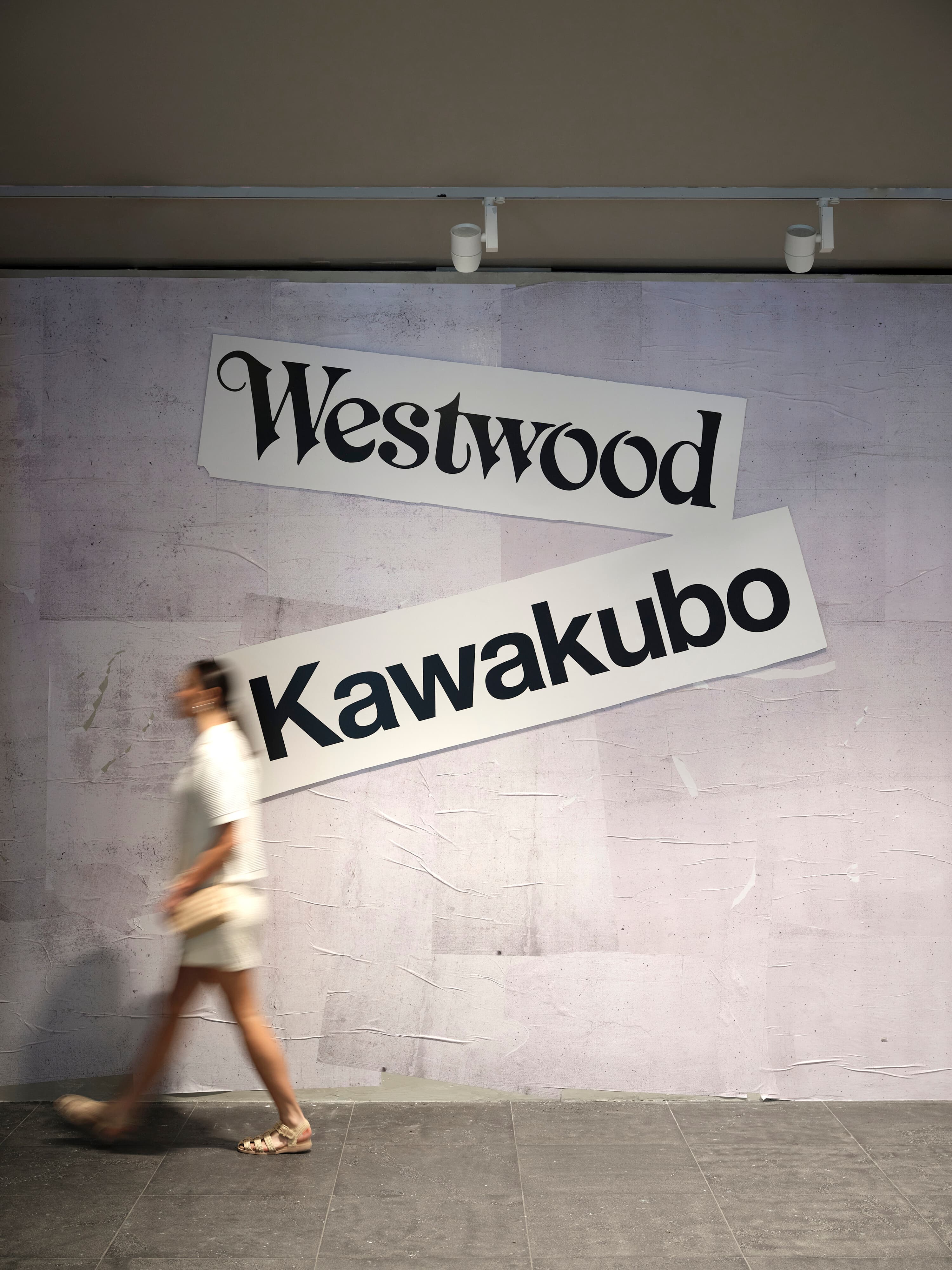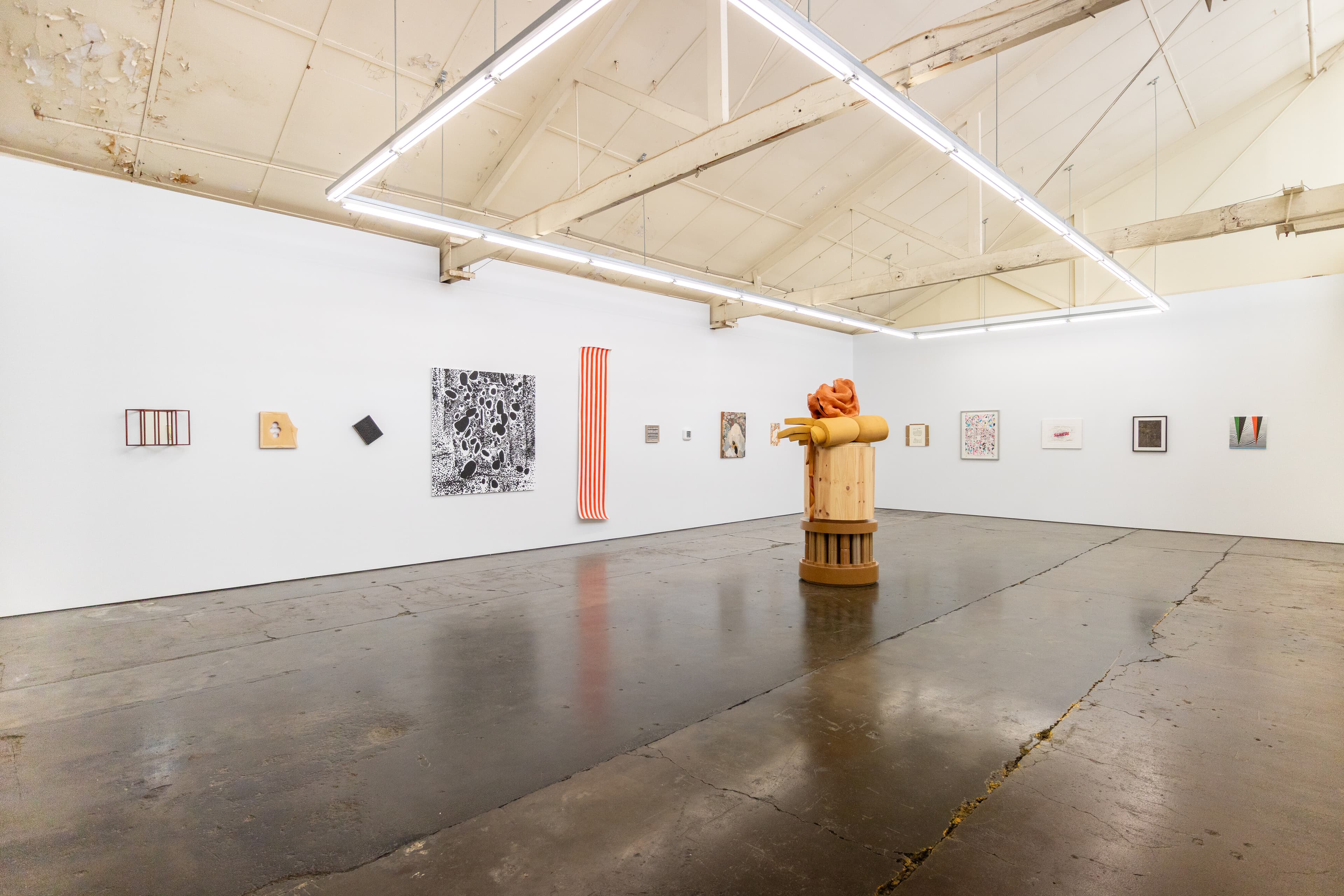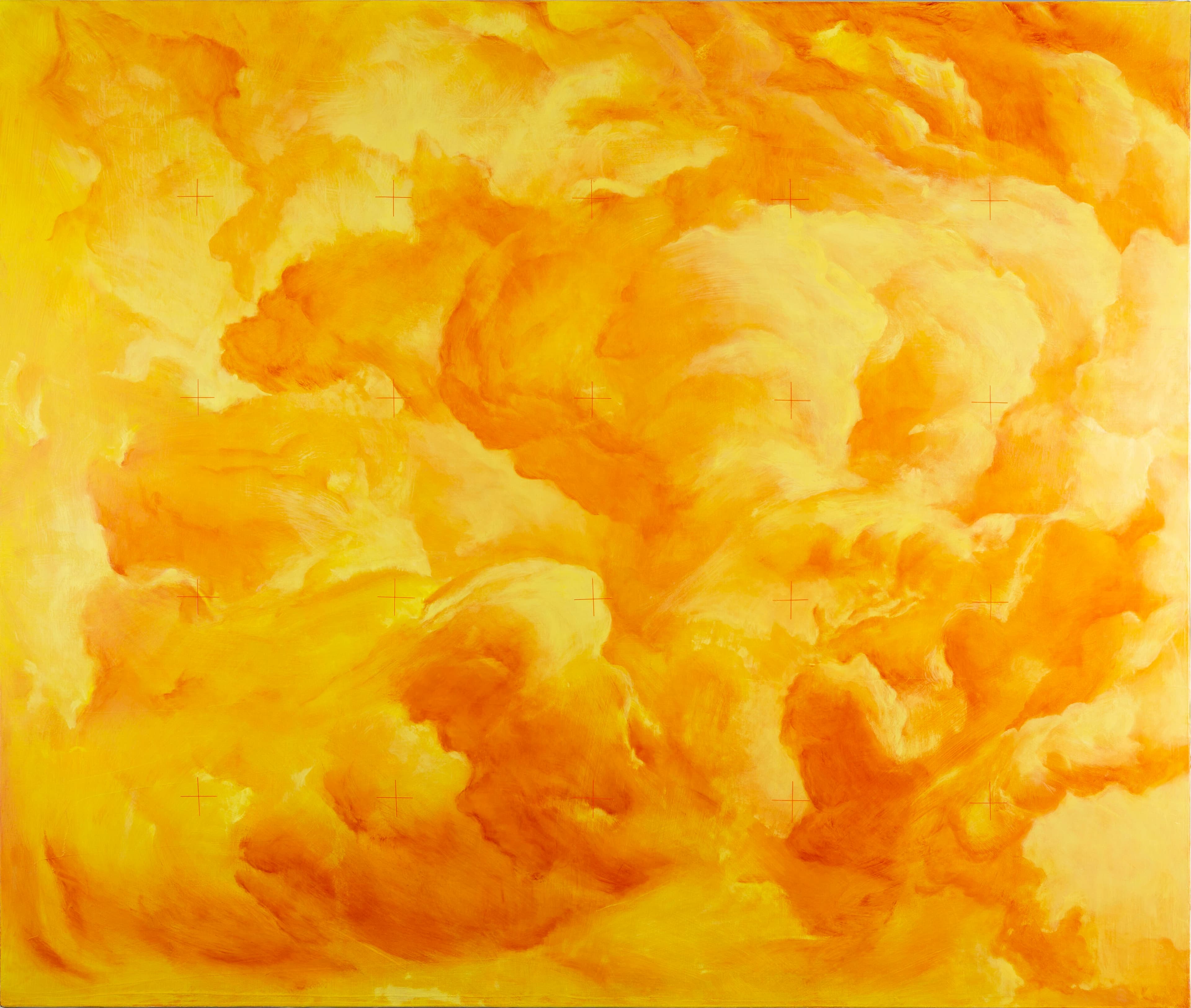Overlapping Magisteria
Anna Parlane
Despite its rather grand title, Overlapping Magisteria at the Australian Centre for Contemporary Art (ACCA) isn’t strictly about scientific taxonomies, whether or not these are understood to be overlapping. It is, however, a tight selection of works that articulates multiple ways of knowing and acknowledges experiences structured by the inchoate and bodily. The twin entrances to ACCA’s galleries are stoppered up with artworks that visually block sightlines into the exhibition and immediately confront viewers with a material presence around which to navigate. After a long, dark, socially-distant winter of gruelling back-to-back Zoom meetings, it is an unmitigated joy to not only be physically present in an art gallery again but also to be drinking in a show as tactile and material-centric as this one.
Curated by Max Delany and Miriam Kelly, the exhibition is the second in ACCA’s biennial Macfarlane Commissions series and is therefore a manifestation of real material support of the financial as well as the sculptural kind. A relatively new player in Melbourne’s art philanthropy circles, the Macfarlane Fund provides thoughtfully targeted assistance to emerging, mid-career and senior artists. The Fund’s partnership with ACCA replaces the gallery’s old “NEW” series, funding five early- or mid-career artists to realise a major new work and giving them the opportunity to test themselves against ACCA’s intimidatingly cavernous exhibition spaces.

Isadora Vaughan’s strategy for filling gallery 1 was straightforward: put in lots of stuff. A clear path leads through Vaughan’s Ogives (2020), which consists of a thick surface of gravel, soil and wood shavings laid over a floor of re-purposed builders’ plastic and piled with a miscellania of sculptural forms, heaps of organic material and found industrial objects. The vibe is very agricultural wasteland, somewhere between Pierre Huyghe’s compost facility at Documenta(13), Untilled (2011–12), and the agricultural arte povera of New Zealand artist Don Driver. The path winding through this elegantly “casual” mise-en-scène is obviously necessary for accessibility; however, it also implicitly signals “keep off the grass”. Vaughan’s careful juxtapositions of the found, the made, the organic and the industrial indicate an interest in mixing things up, eroding conventional categorisations in favour of an acknowledgement of interdependence and ecological relationality. Ogives clearly demonstrates the strength of her sculptural sensibility, and her ability to deftly handle form, texture and colour. However, perhaps in part because of its aesthetic loveliness, the installation as a whole is too manicured to speak to the unruly processes that the artist seems most interested in. In particular, the path that so clearly demarcates the viewer’s space from the space of the artwork” ensures that the piece remains a representation, a stage set rather than an entropic site of unbecoming.

Sidney McMahon’s Of Sorrow and Release (2020) stutters through a choreographed holding pattern on endless loop. A double-screen video work paired with tall black “sails” that are mechanically hoisted and lowered in response to movement sensors in the gallery, McMahon’s installation is less about entropic processes and more about cognitive processing, and (I am informed by the wall label) relates to the artist’s recent experiences of transition. The two screens play the same short video loop but out of sync, which creates staccato repetitions. The video shows a close-up of a mouth monologuing about digital updates searching, processing and restarting. A hand reaches up and performs a digital search of the mouth, which robotically continues speaking despite this impediment. The gesture is uncomfortably invasive but also disengaged and habitual, a bit like when you pat your pockets while looking for your keys. The mixed metaphors here—a ship in the doldrums, a computer installing updates, a body on autopilot—clearly articulate a sense of stalled forward progress and the processing of traumatic or overwhelming quantities of new information.

The artworks in Overlapping Magisteria are not, themselves, overlapping. Each artist is siloed off in their own room or area, and this is clearest in gallery 1 where Vaughan and McMahon’s works are adjacent but not really in communication. Delany and Kelly’s title refers to an intervention into the United States’ “science wars” of the late 1990s by the populist evolutionary biologist Stephen Jay Gould. Outrage over the efforts of some fundamentalist Christians to introduce “creationism” into the school science curriculum inspired Gould to declare the conflict between science and religion a false dichotomy. He claimed that the two can peacefully coexist, because the “empirical realm” of science does not overlap with the questions concerning “moral meaning and value” that constitute religion’s proper jurisdiction. Gould described the two fields as non-overlapping magisteria, thereby (predictably) causing further indignation by refuting both science and religion’s claims to epistemological priority, and also apparently rejecting the relativist position common in the arts and humanities that argues that nature cannot be known independently of culture.
The curators’ reference to this decades-old dispute in another country is incongruous here. Perhaps after the events of this year I’m more irritable than usual about the global reach of the spectacle of dysfunction that is United States politics, but framing the work of these artists—and particularly the work of Indigenous artist Robert Andrew—in terms borrowed from a parochial US debate about the status of creationism seems at odds with this show’s politics. There are many excellent writers, such as Linda Tuhiwai Smith, Jill Bennett or Jack Halberstam in his recent book Wild Things, who tackle the problems of taxonomies in ways that are highly relevant. However, putting this complaint aside, the relativist assertion that Gould’s “magisteria” do indeed overlap rings true here and now. Perhaps more than most, people with disabilities, trans and gender-queer folk and First Nations communities have an intimate understanding of the degree to which empirical scientific facts come loaded with “moral meaning and value”.


Andrew’s Tracing Inscriptions (2020) speaks with precision and quiet force about the epistemic violence done when settler-colonial knowledge systems are applied to Indigenous ways of knowing. An elaborate, room-scale drawing machine, the work translates Yawuru words into an enormous wall drawing. A computer-driven system on one side of the room slowly maps out letters as a series of coordinates, with each movement of this mechanical puppeteer translated via a web of wires into marks made by burnt and ochre-dipped sticks on the opposite wall. While it centres on a binary opposition between electro-mechanical and organic tools that risks being overly simplistic, Andrew’s installation comes to life when it moves. Echoing the robotic movements of a body on autopilot in McMahon’s installation, the movements of the drawing sticks are stumbling and trance-like, as if Andrew is staging a séance. In both artists’ works, it is this acknowledgement of something lost or unable to be spoken, the body’s clumsy and halting efforts to process or express strong feelings, that endows them with emotion.

Although Andrew’s work is excellent, Sam Petersen’s is easily the strongest in the exhibition. Her plasticine and cling film accretions are stuffed into crevices in the tall corten-steel wall at the show’s entrance as well as around the perimeter of the floor in gallery 3. Plasticine, which warms to the touch and retains bodily impressions, has become Petersen’s signature material,and several of her recent works have involved the plasticine-based augmentation of gallery architecture. I’m Still Feeling It (2020) occupies ACCA’s large scale spaces with total confidence. Inserted into the intimate crevices of the gallery within its prophylactic barrier of cling film (because safety first), the greasy-plasticky plasticine is the colour of (white) skin in a hot flush. The fact that Petersen is a wheelchair user and a forthright commentator on disability issues is bound into her practice, and this work clearly responds to ableist erasures of the erotic lives of people with disability. It’s fierce, very kinky and very funny.

As a Melbourne-based artist, Petersen was less affected than some of the other artists by travel restrictions in the lead-up to the show. Paris-based Mimosa Echard was unable to take up a planned Melbourne residency or be physically present during install, and this impediment shows in the relative restraint of her installation. Echard’s wall-based works are somewhere between painting, collage and relief sculpture: they are gorgeous, gooey, filthy surfaces, encrusted with layers of textile fragments, images and objects in resin, latex, paint and glue. Bringing together a palette that spans Barbie pink to the reddish-brown of dried blood, kitsch trinkets, various fluids of unknown origin and the occasional sex toy, they reminded me of the theatrical grotesqueness of Cindy Sherman’s untitled colour series of the late 80s. I wanted more—a whole wall!—however, of course, remote install doesn’t allow for that kind of spatial responsiveness. The room’s mood lighting, supplied by lightbulbs built into a series of hanging sculptures, does help to unify Echard’s various works into something closer to an installation than a gallery hang, but the wall pieces promise a level of hedonistic immersion that the room as a whole doesn’t deliver.

The last few months have been tough for those of us attempting to continue productive work under extraordinary conditions. This includes, of course, artists and gallery staff who have been performing a crazy new dance: simultaneously pivoting to online programming and flexing to accommodate extreme uncertainty into their physical exhibition planning. I do think this show needed more physical integration between the artists’ works, and less reliance on a somewhat incongruous curatorial citation (more overlapping, less magisteria). However, I also think that any exhibition realised in these circumstances deserves congratulations—let alone a show of large-scale commissions by relatively young artists. As a post-lockdown re-launch it provides a very welcome re-entry into the world of physical proximity.
Anna Parlane is a lecturer in art history and theory at Monash University.


